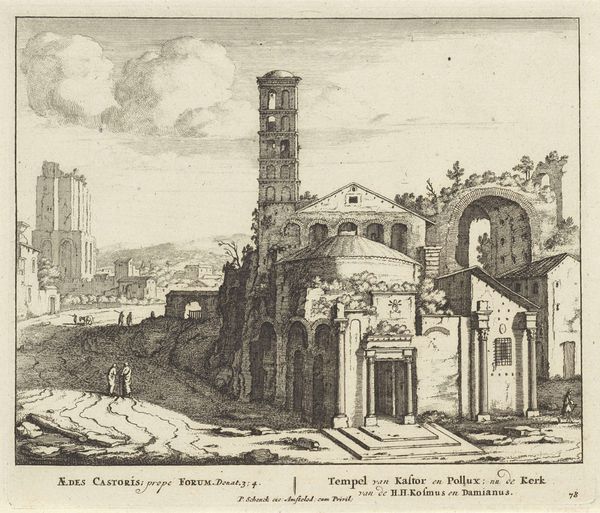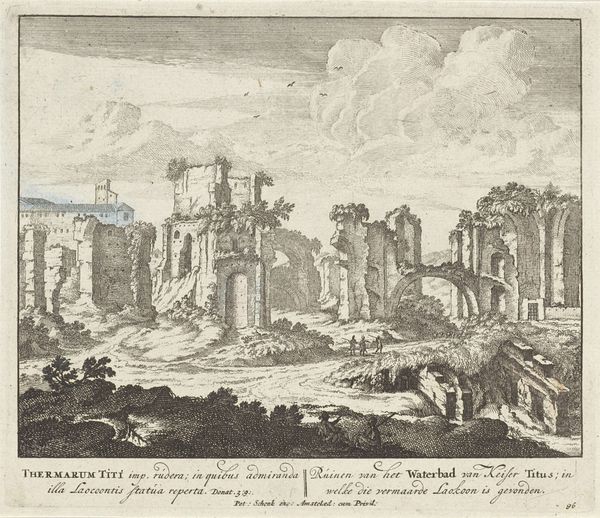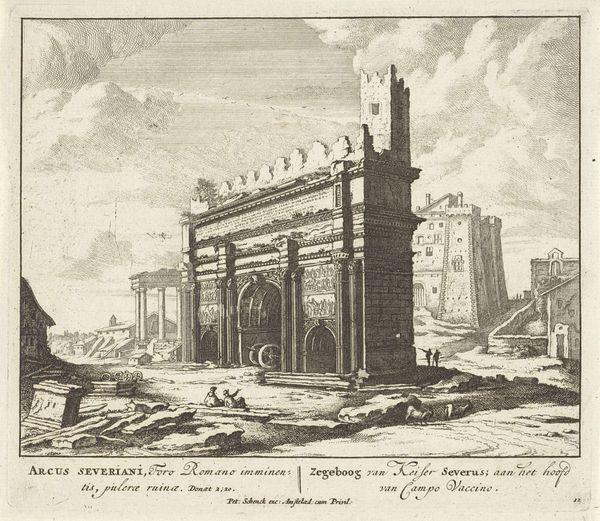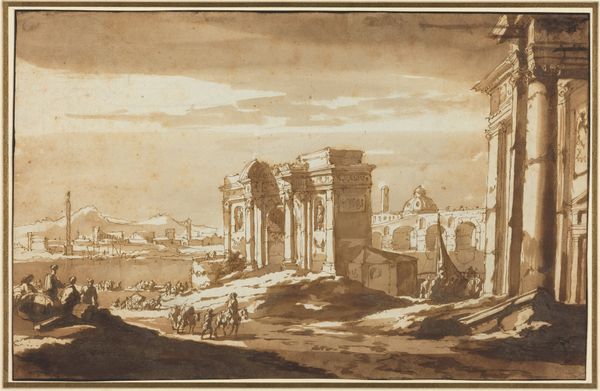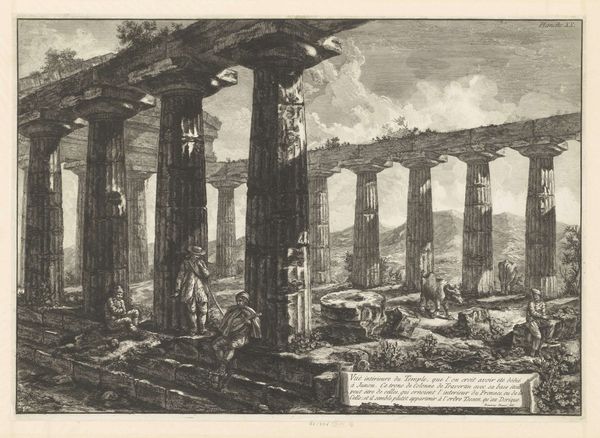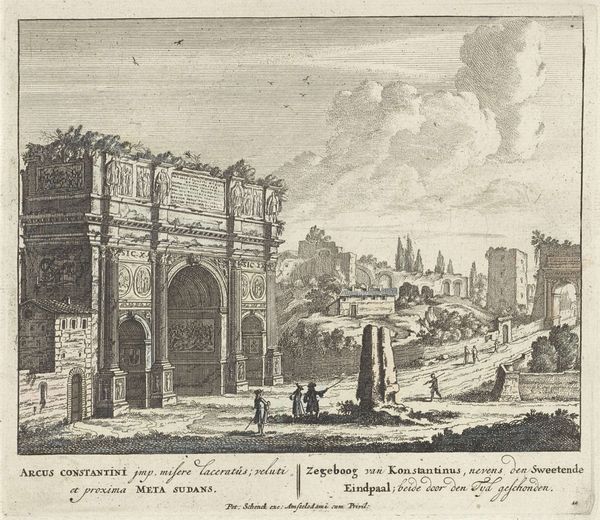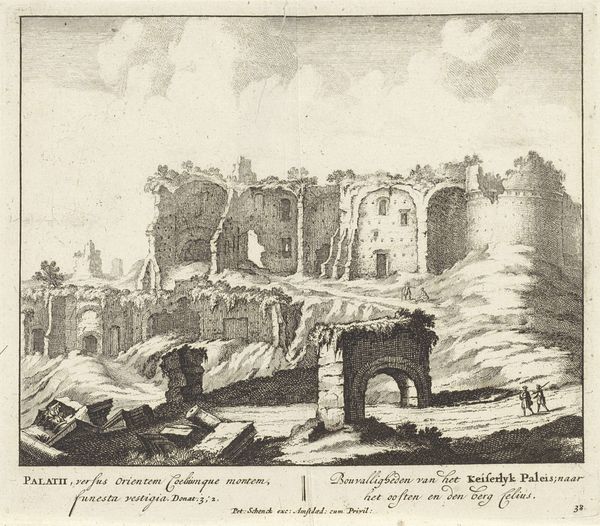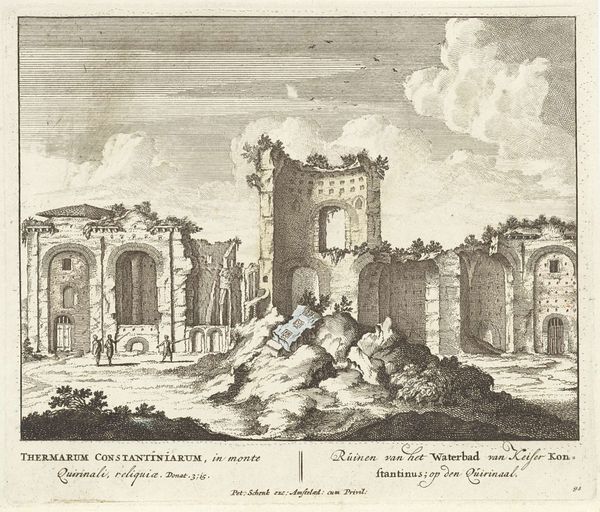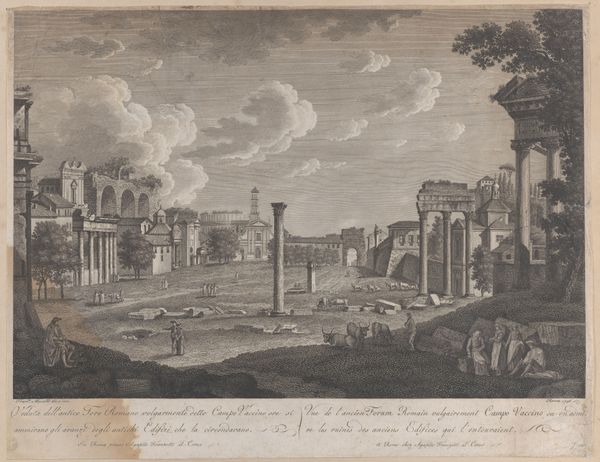
print, etching, engraving
#
baroque
# print
#
etching
#
landscape
#
ancient-mediterranean
#
cityscape
#
history-painting
#
italian-renaissance
#
engraving
Dimensions: height 166 mm, width 197 mm
Copyright: Rijks Museum: Open Domain
Curator: It evokes a sense of melancholic grandeur, doesn't it? All that crumbling stone bathed in a soft, diffused light. Editor: It’s striking how the medium, this etching, contributes to that mood. The precision of the lines almost romanticizes the decay. We’re looking at an artwork called “Ruïne van de tempel van Marcus Aurelius te Rome,” or “Ruins of the Temple of Marcus Aurelius in Rome," likely made sometime between 1675 and 1711 by an anonymous artist. It resides here at the Rijksmuseum. Curator: Indeed. Notice how the artist renders the classical ruins? They aren’t merely documenting architectural remains; they're also highlighting a specific cultural and historical narrative, drawing a through-line from the Roman Empire to the Italian Renaissance and even the Baroque period. It serves as a visual memento mori. Editor: From a material perspective, the process of creating this print is fascinating. The artist had to meticulously incise lines into a metal plate, ink it, and then transfer the image onto paper. Consider the labor, the skill, and the technology involved. Curator: Absolutely, and consider also the implications of distributing such an image. Prints like these were instrumental in disseminating ideas about classical antiquity and Roman architecture across Europe. It makes you wonder how perceptions were shaped and how history can be, quite literally, etched in the public's mind. Editor: It speaks to a wider network of production and consumption too. The paper itself, the ink, the printing press, all these things connect this image to global trade routes and the rising power of the merchant class. The anonymous hand is a node in that network. Curator: Right. In that way the image and its setting resonate – these powerful ruins transformed by time – or were they always ruins even during their time? Editor: Thinking about this print, the social history imbued into both the architecture and production makes me consider all we still have yet to learn. Curator: For me it deepens the connection between our cultural symbols and the emotions they inspire. A conversation for the ages.
Comments
No comments
Be the first to comment and join the conversation on the ultimate creative platform.
